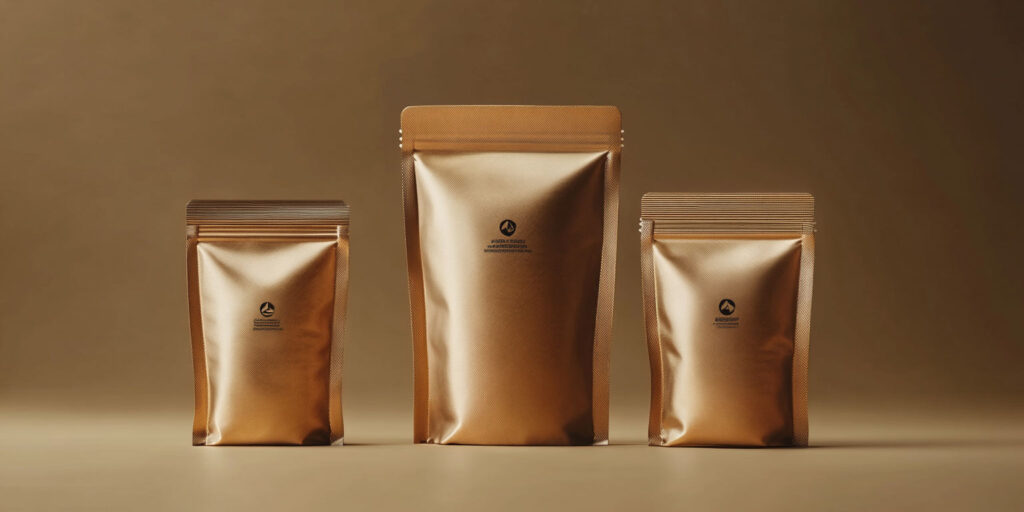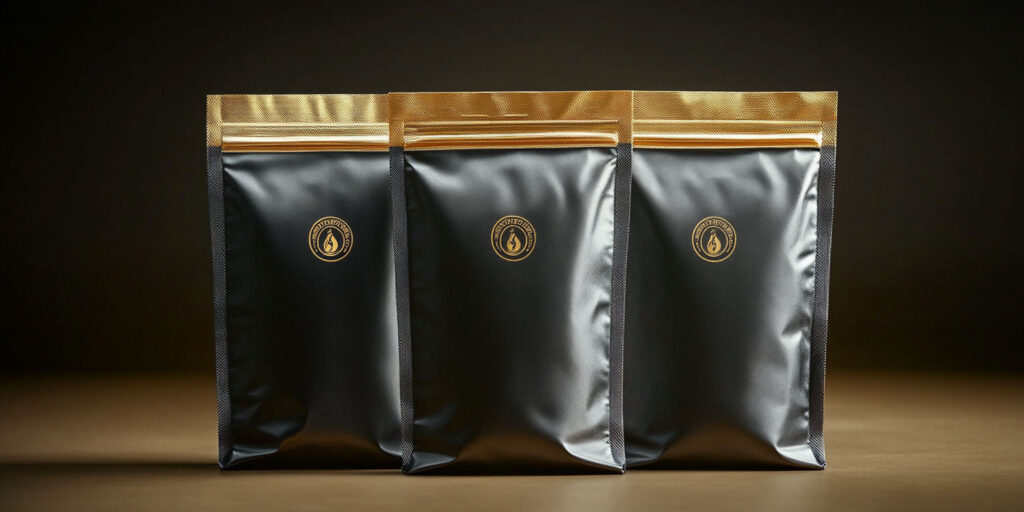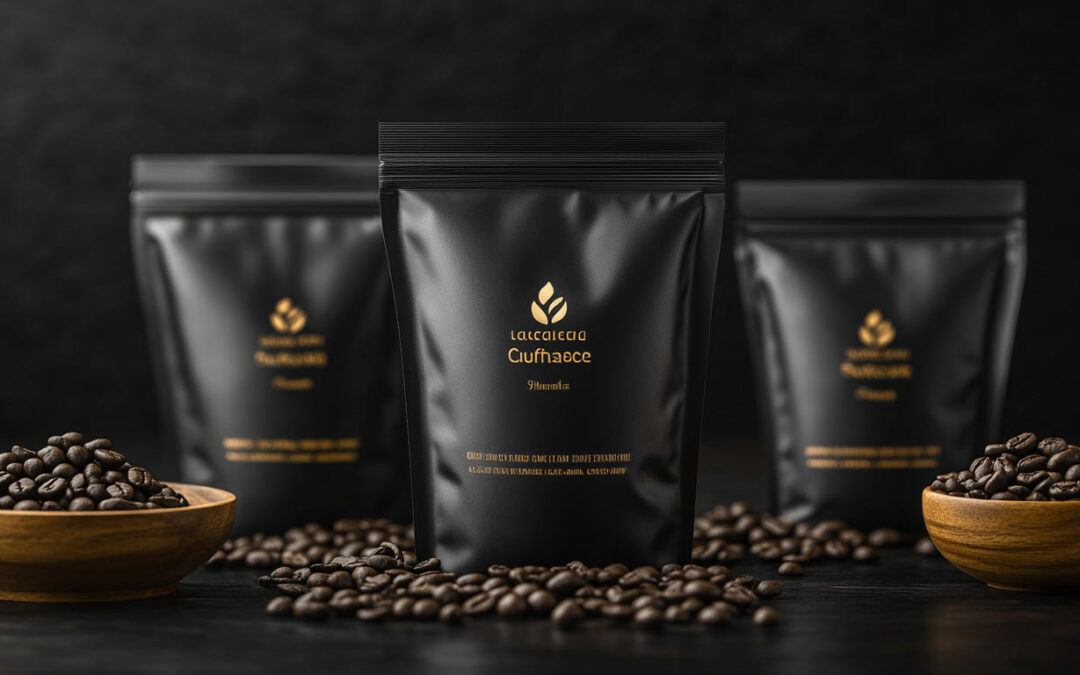Why Stand-Up Coffee Bag Pouches are the New Favorite
When it comes to packaging coffee, freshness, convenience, and aesthetics matter. Stand-up coffee pouches offer all of these, and more. These bags don’t just hold your favorite beans; they enhance the overall coffee experience.
Key Benefits of Stand-Up Coffee Pouches:
- Keeps Coffee Fresh: Most stand-up pouches come with resealable zippers and one-way valves, allowing carbon dioxide to escape while preventing air from entering. This helps maintain the coffee’s flavor and aroma longer.
- Space-Saving Design: The flat bottom allows the pouch to stand upright on shelves, making it easy to store and display in any environment. This helps both retailers and consumers save space.
- Versatile and Durable: Made from high-quality materials like laminated films or aluminum, these pouches protect against moisture, oxygen, and UV light, all of which can compromise coffee quality.
- Customization Options: Stand-up coffee pouches can be printed with various designs, colors, and logos, helping coffee brands create eye-catching packaging that stands out.
- Eco-Friendly Choices: With growing demand for sustainable options, some pouches are now available in recyclable or biodegradable materials, reducing the environmental impact.
What Sizes Do Stand-Up Coffee Pouches Come In?
Stand-up coffee pouches are available in a variety of sizes to suit different needs, ranging from small sample-sized bags to large bulk options. The sizes are usually measured by the pouch’s width and height, which directly correlates to how much coffee the pouch can hold.
Here’s a quick look at the common sizes:
- Small Pouches (6×8 inches): Perfect for samples or small amounts of specialty coffee. Typically holds around 4-6 ounces of coffee beans or grounds.
- Medium Pouches (8×10 inches): A common size for selling retail bags of coffee. These pouches usually hold about 12-16 ounces (1 pound) of coffee.
- Large Pouches (14×24 inches): These are designed for bulk purchases and can hold up to 5 pounds of coffee. Ideal for wholesalers or large-scale coffee operations.

Why Size Matters:
- Shelf Space: Smaller pouches are great for crowded retail spaces where you want to display more products. Larger pouches are best for bulk orders.
- Portability: Medium pouches offer the best balance between portability and storage capacity for most consumers.
- Brand Flexibility: By offering a range of sizes, brands can cater to various customer preferences, from small-batch enthusiasts to heavy users.
Disadvantages of Stand-Up Coffee Bag Pouches
As great as they are, stand-up coffee pouches aren’t perfect. It’s important to weigh the pros and cons before deciding if they’re the right packaging solution for your coffee.
Some Potential Downsides:
- Initial Cost: While these pouches are highly durable and protective, they can be more expensive to produce than traditional coffee bags or paper sacks, especially when you factor in the cost of resealable features and custom designs.
- Environmental Impact: Although more eco-friendly options are becoming available, some stand-up pouches are made from plastic or non-recyclable materials, which can contribute to environmental waste.
- Limited Reusability: Despite being resealable, most stand-up pouches aren’t reusable for other purposes, which might not sit well with eco-conscious consumers looking for multi-use packaging.

How Are Stand-Up Coffee Pouches Made?
Curious about how these modern marvels of packaging are produced? Stand-up pouches are created through a sophisticated process that involves layering different materials to ensure durability and freshness.
Steps Involved in Making a Stand-Up Coffee Pouch:
- Material Selection: Manufacturers choose materials based on the pouch’s intended purpose. Common materials include plastic films, aluminum foil, and laminated paper. For coffee pouches, a barrier material (like aluminum) is often used to keep oxygen and light out.
- Lamination Process: Different layers of materials are laminated together to create a durable, airtight structure. This is critical for preserving the quality of the coffee inside.
- Pouch Formation: The laminated film is then cut and sealed into the iconic stand-up pouch shape. The flat bottom is carefully constructed so the pouch can stand on its own.
- Adding Functional Features: This is where resealable zippers, tear notches, and one-way degassing valves are added. These features make the packaging more user-friendly and help maintain the coffee’s freshness.
- Printing & Customization: The final step involves printing logos, designs, and product information onto the pouch. Custom designs help brands make their packaging stand out on the shelf.
Conclusion: Why Stand-Up Coffee Pouches Are the Future of Coffee Packaging
Stand-up coffee pouches offer a blend of convenience, freshness, and customization that few other packaging options can match. Whether you’re a coffee seller looking to enhance your product’s shelf appeal or a consumer who values freshness and style, these pouches are an excellent choice.
From a range of sizes to innovative features like resealable zippers and eco-friendly materials, stand-up coffee pouches are taking over the market—and for good reason. Yes, there are a few potential downsides, but the benefits often outweigh them, especially when you consider the improved storage, design flexibility, and freshness that these pouches offer.
Ready to level up your coffee packaging? Give stand-up pouches a try!

